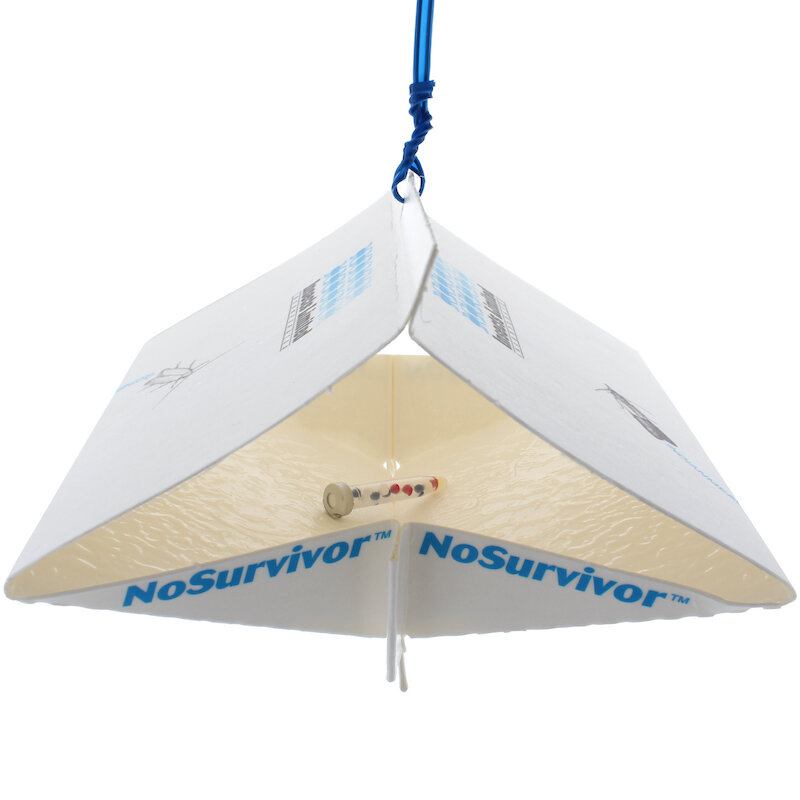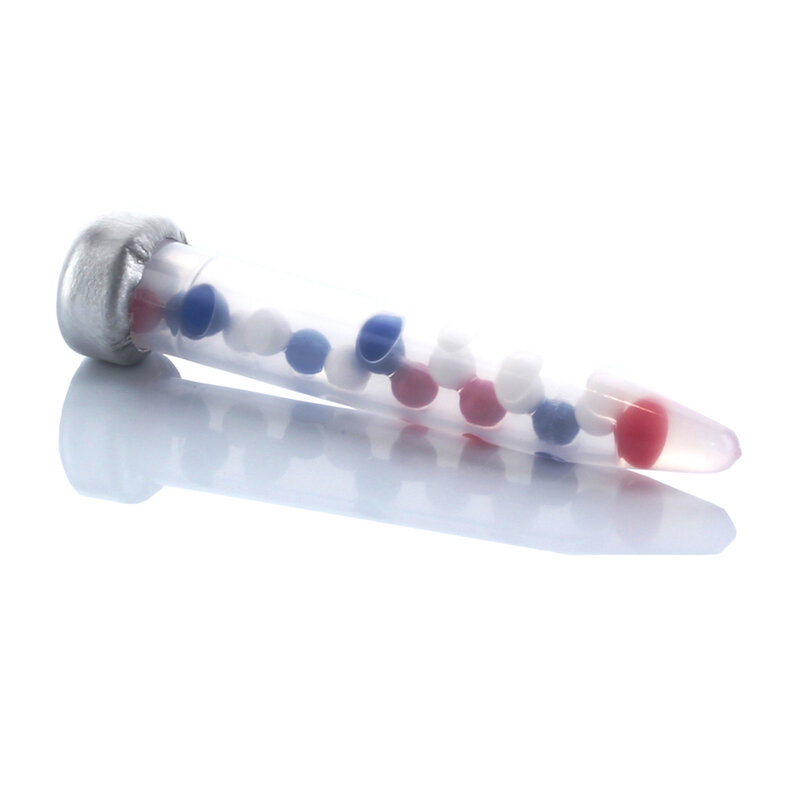Warehouse Beetle (Trogoderma Variabile)
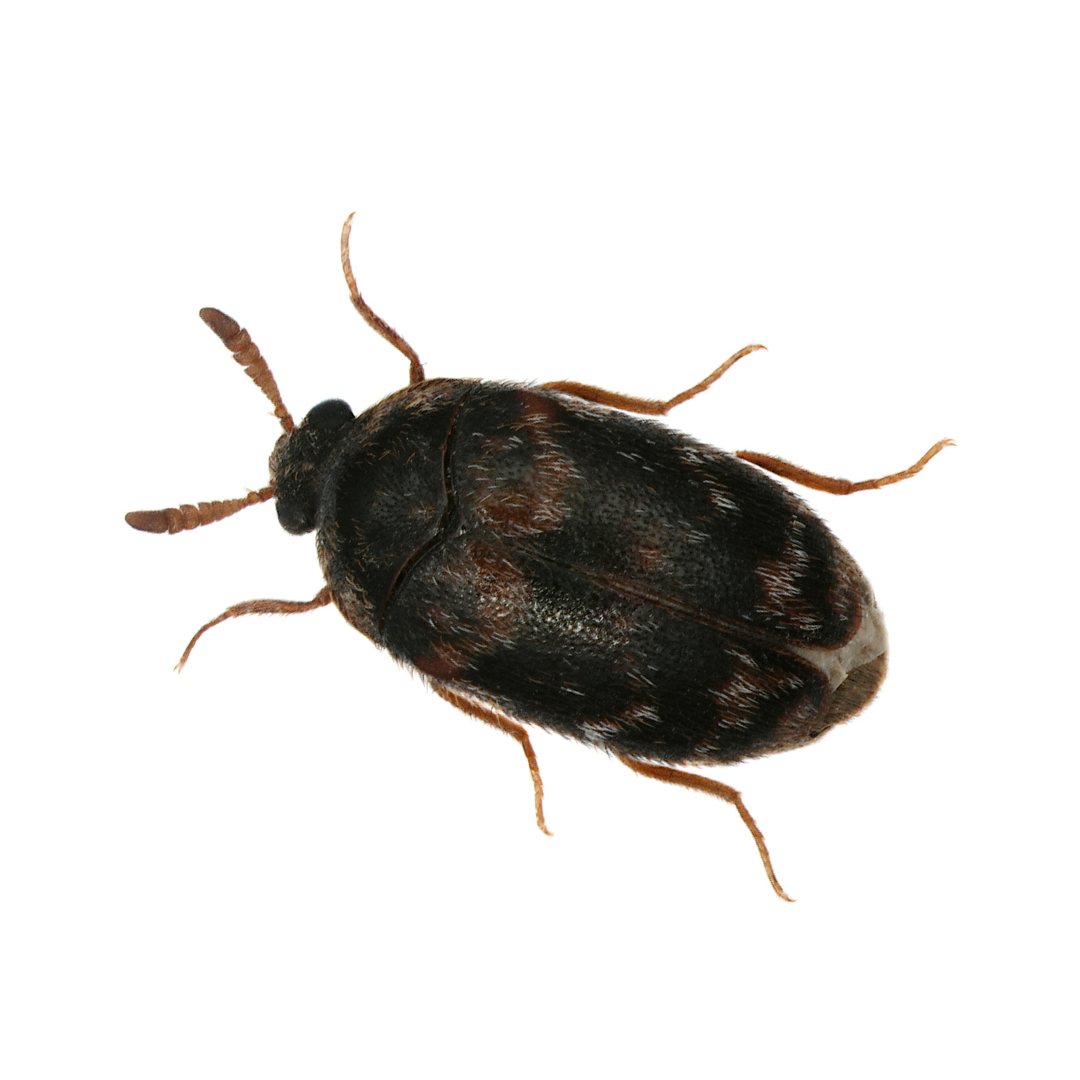
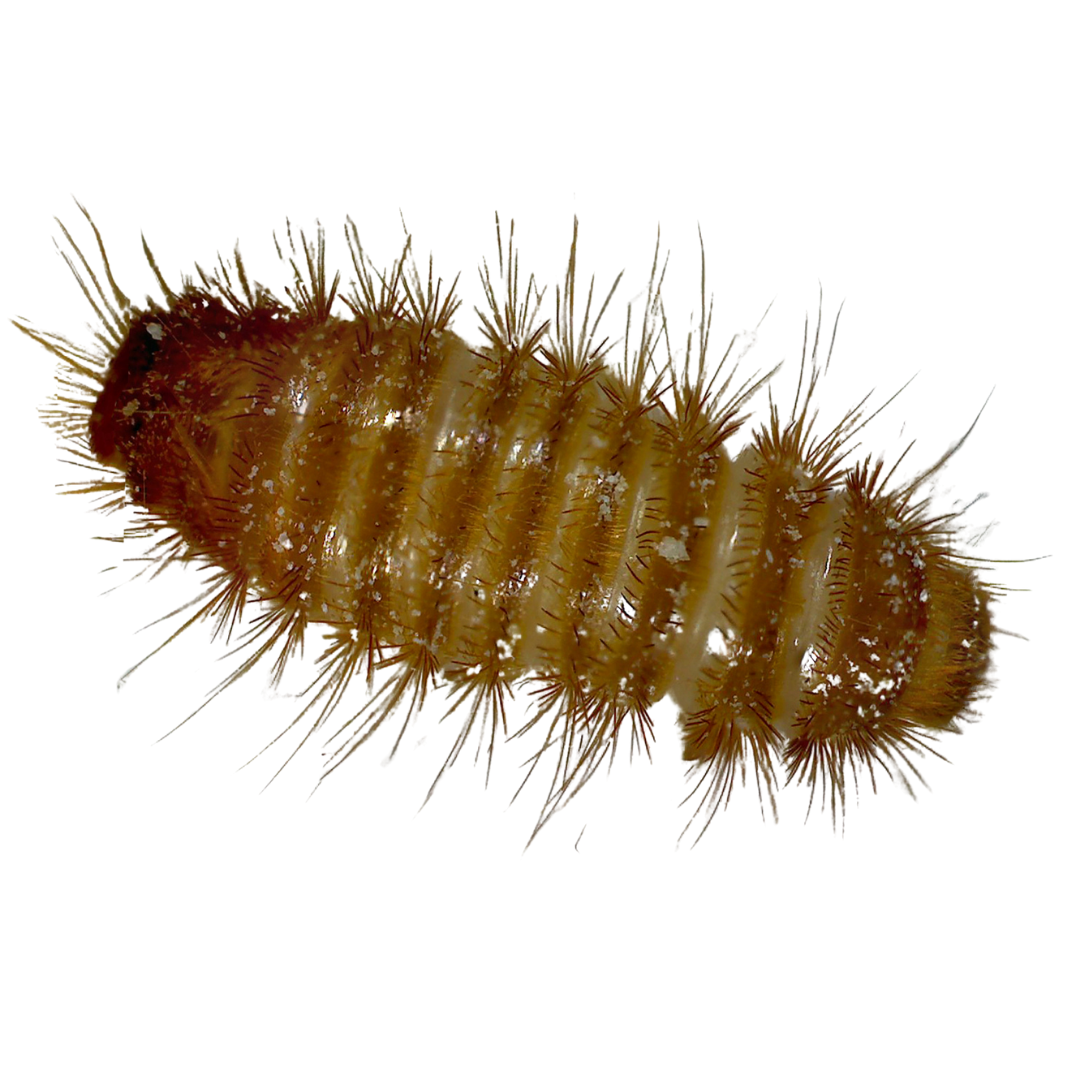
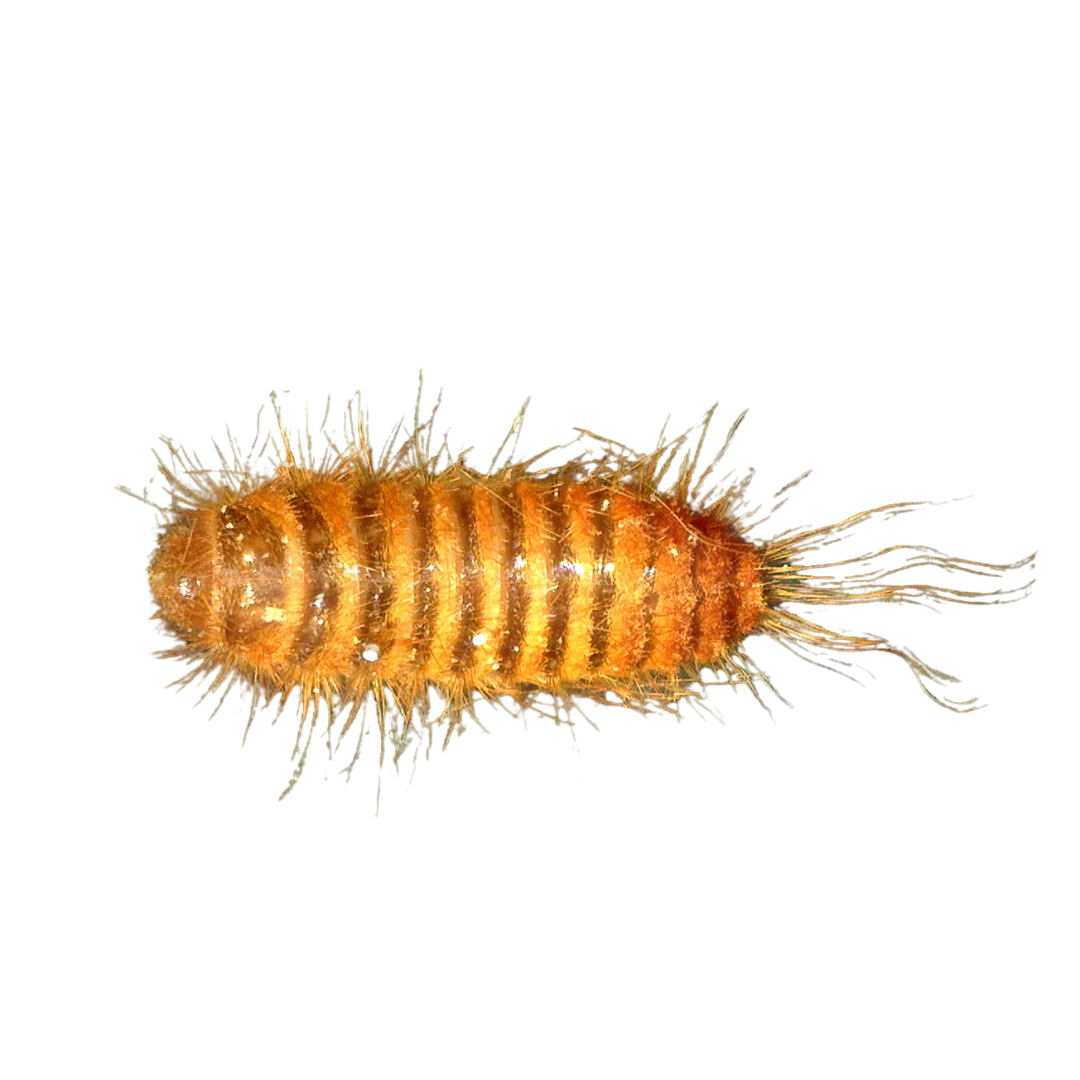
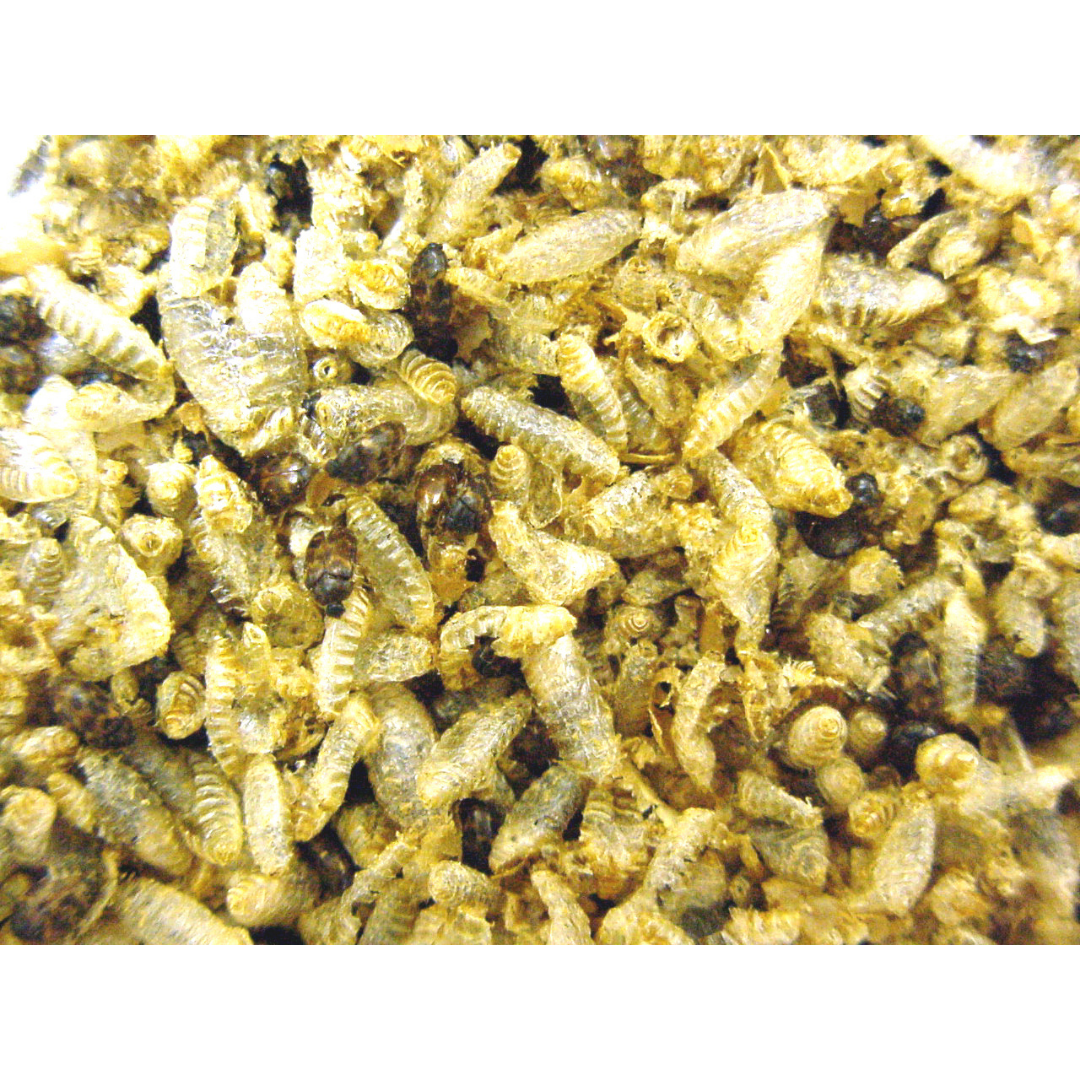
Pheromones and Traps for Warehouse Beetle
Warehouse Beetle Description
Adults: Beetles are 2-3 mm (0.125 inches) long and brownish black in appearance. Their elytra (wing covers) are covered with fine hairs which can produce a mottled pattern in coloration.
Eggs: Oval, ivory in color and 0.5 mm (0.02 inches) long.
Larvae: 6-7 mm (0.25 inches) long and have a yellow white to dark brown colored body which is covered with tufts of setae (hairs) on each body segment. There are paired patches of concentrated setae on the last four abdominal segments and usually a tuft of longer hairs at the tip.
Pupae: Pupal cases are oval and hairy. Inside the pupal skin a whitish larva to blackish beetle may be visible.
Warehouse Beetle Life Cycle
This insect occurs in all life stages in warm buildings, throughout the year with two or three generations occurring each year. Females mate within one day of emerging from the pupa. Five to sixty eggs are deposited near a food site. Larvae will molt 5 or 6 times before pupating.
The life cycle is completed in approximately 35 days. With poor food conditions, lower temps, or regular disturbance, the larval lifespan can be extended, and pupal stages may undergo diapause. Under these conditions, development can be extended by many months to over a year. Larvae rarely move from the site of egg laying if sufficient food is available.
Damage & Detection
Both adults and larvae can feed on a wide variety of stored foods including cereals, candy, flour, fishmeal, noodles, dried spices, nuts, dead animal carcasses (drier stages), and pet foods. The larval stage prefers to hide in dark areas where food is stored, including processed and packaged foods, or in cracks and crevices where waste food has accumulated. The use of pheromone traps and inspections can determine the location and degree of infestation.
Fun Facts
Similar species include many other Anthrenus, Anthrenocerus, Attagenus and Trogoderma species.
Other common names include grain Trogoderma.
Warehouse beetle larvae have hairs on their body called setae that can cause gastrointestinal irritation in infants, children, and at-risk individuals. They may also cause an allergic reaction.
Warehouse beetles initiate flight at temperatures above 22.5°C (73°F).
The pheromone that attracts warehouse beetle also attracts similar species including:
Khapra beetle (Trogoderma granarium)
Larger cabinet beetle (Trogoderma inclusum)
Monitoring Tips & Tricks
Warehouse Beetle Monitoring Guidelines
Lure
BULLET LURE® Contains sex pheromone to attract male beetles.
PANTRY PATROL® Pheromone /oil dispenser. Contains grain-based food attractants to attract males and female as well as sex pheromones to attract male Warehouse beetle.
STORED PRODUCT BEETLE Lures are food bait and pheromone lures that was specifically designed to make the Pantry Patrol gel into a tablet form.
ALL BEETLE TRAP READY-TO-USE TRAY is a preloaded accessory of the ALL BEETLE TRAP that contains either the PANTRY PATROL Pheromone/oil dispenser or the STORED PRODUCT BEETLE LURE and glueboard.
Lure Storage
Keep unopened BULLET LURES, PANTRY PATROL pheromone /oil dispensers, READY-TO-USE TRAYS, and STORED PRODUCT BEETLE LURES in cool storage for 12 Months or in refrigeration for up to 24 months before using or discarding.
Trap Designs Used with Lure
NOSURVIVOR TRAPS are diamond shaped sticky traps designed to be hung.
ALL BEETLE TRAP consists of three parts: A clear lid, blue base, and snap in tray. This device can be paired with many different types of attractants available by Insects Limited depending on the insect you are monitoring.
PANTRY PATROL “CORNER” pitfall traps contain a triangular pit to receive a full dispenser of pheromone /oil. Dust cover is incorporated into cardboard packaging.
Pheromones and Traps for Warehouse Beetle
Trap Placement & Use
Trap Placement Techniques
Pheromone traps can be placed year-round but are especially recommended when temperatures exceed 12.5°C (55°F). Floor pheromone traps like the All Beetle Trap and Flat Trap are more effective at capturing warehouse beetles compared to hanging pheromone traps, however, hanging pheromone traps tend to stay clean longer and allow for easier inspection.
Place hanging pheromone traps 1.5 m (5 feet) above ground or at eye level to allow for easy inspection when monitoring traps. In areas such as a pantry or home, place one or two pheromone traps per room.
In commercial areas such as warehouses or retail stores, place pheromone traps 7.5–15 m (25–50 feet) apart to determine the presence or absence of warehouse beetles. Increase pheromone trap density to 4.5–7.5 m (15–25 feet) apart to help locate the source of warehouse beetle.
Keep pheromone traps 7.5 m (25 feet) away from exterior doors. Warehouse beetle pheromone traps are best utilized in areas that store dried goods such as food, grains, seeds, nuts, dried fruit, animal feed, or pet food.
Trap and Lure Maintenance
Replace traps when glue is filled with insects or becomes dusty. Replace pheromone lures every 90 days. Replace all pheromone lures in a location at the same time. Do not cut the cap off the bullet
Take this information with you
Warehouse Beetle Behavior
Pest FAQs
What do warehouse beetles look like?
Adult beetles are 2-3 mm (0.125 inches) long and brownish black in appearance. Their elytra (wing covers) are covered with fine hairs which can produce a mottled pattern in coloration.
The eggs are oval in shape and ivory in color and 0.5 mm (0.02 inches) long. The larvae are 6-7 mm (0.25 inches) long and have a yellow white to dark brown colored body which is covered with tufts of setae (hairs) on each body segment.
There are paired patches of concentrated setae on the last four abdominal segments and usually a tuft of longer hairs at the tip. Warehouse beetles are excellent fliers and will freely fly indoors from outside.
How to get rid of warehouse beetles?
The use of pheromone traps for warehouse beetles can indicate their presence as well as where the beetles are coming from. Insect light traps are also an excellent indicator of the presence of warehouse beetle adults. A visual inspection of dried pet food or other dried food goods in the vicinity of the pheromone traps containing the most beetles can reveal specific items containing larvae, pupae and adult beetles.
Once an infestation is found, the infested materials should be sealed up and discarded or treated to kill the warehouse beetles. Treatment options for warehouse beetles includes freezing for 1 week or having a certified pest management specialist perform an anoxic treatment or a gas fumigation on the infested materials.
What do warehouse beetles eat?
Warehouse beetles can eat a very wide range of dried food goods. They are commonly found in dried pet foods, dried food mixes, cereals, grains, and in many other types of dried food goods.
Join Our Informed Community
Receive the latest industry updates as soon as they are published.


